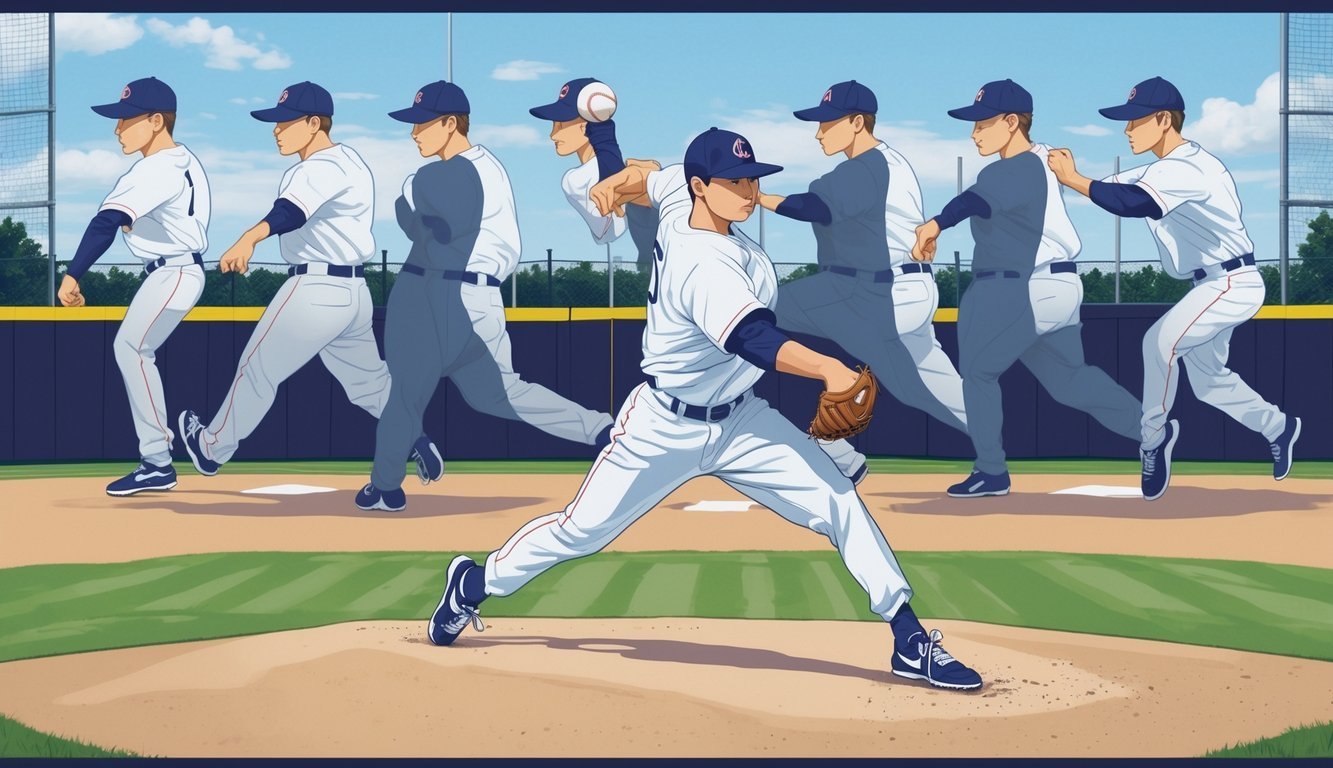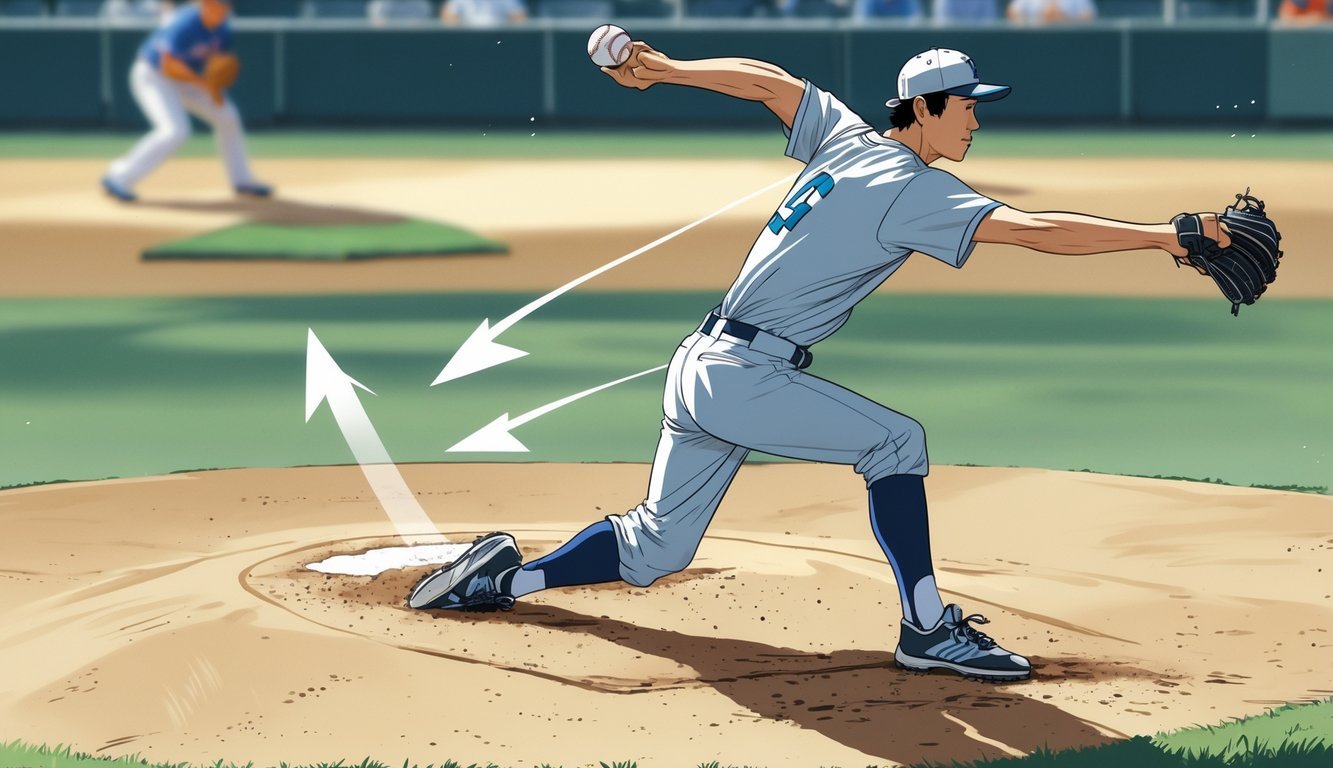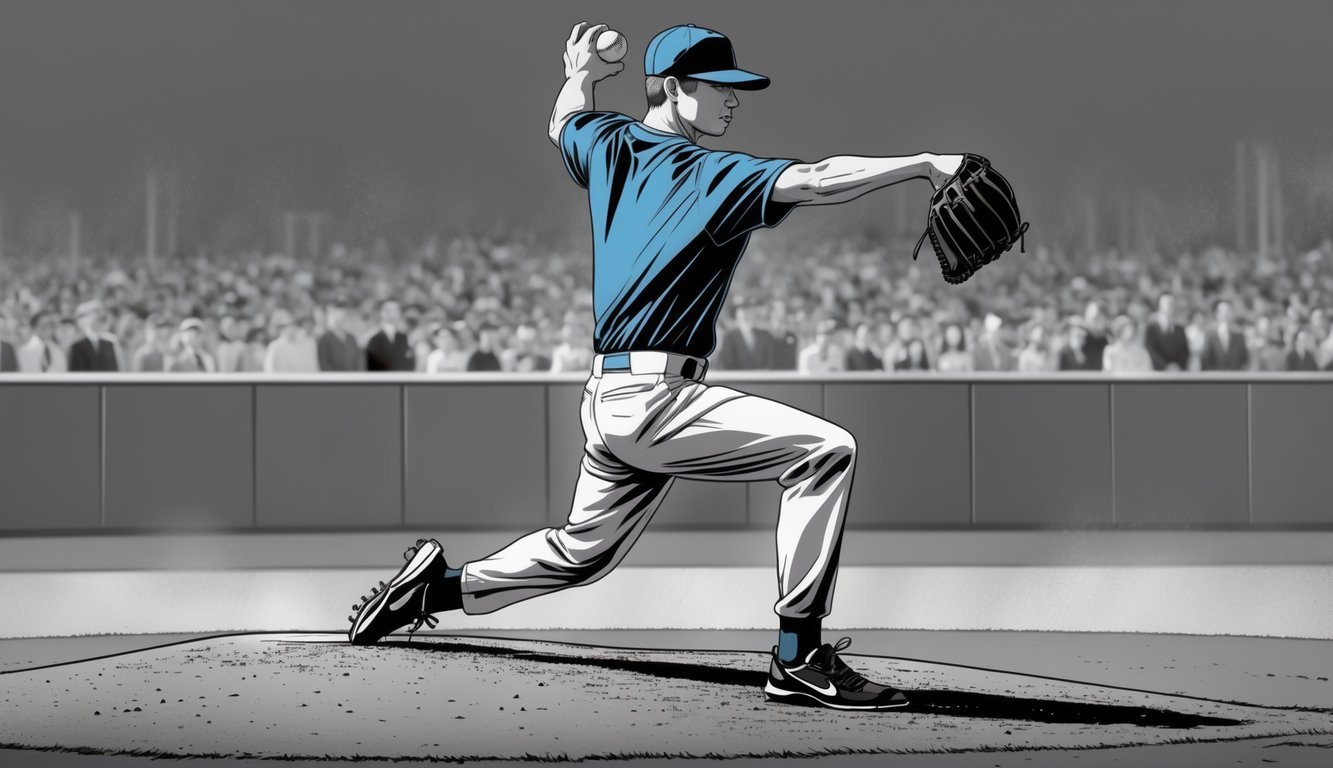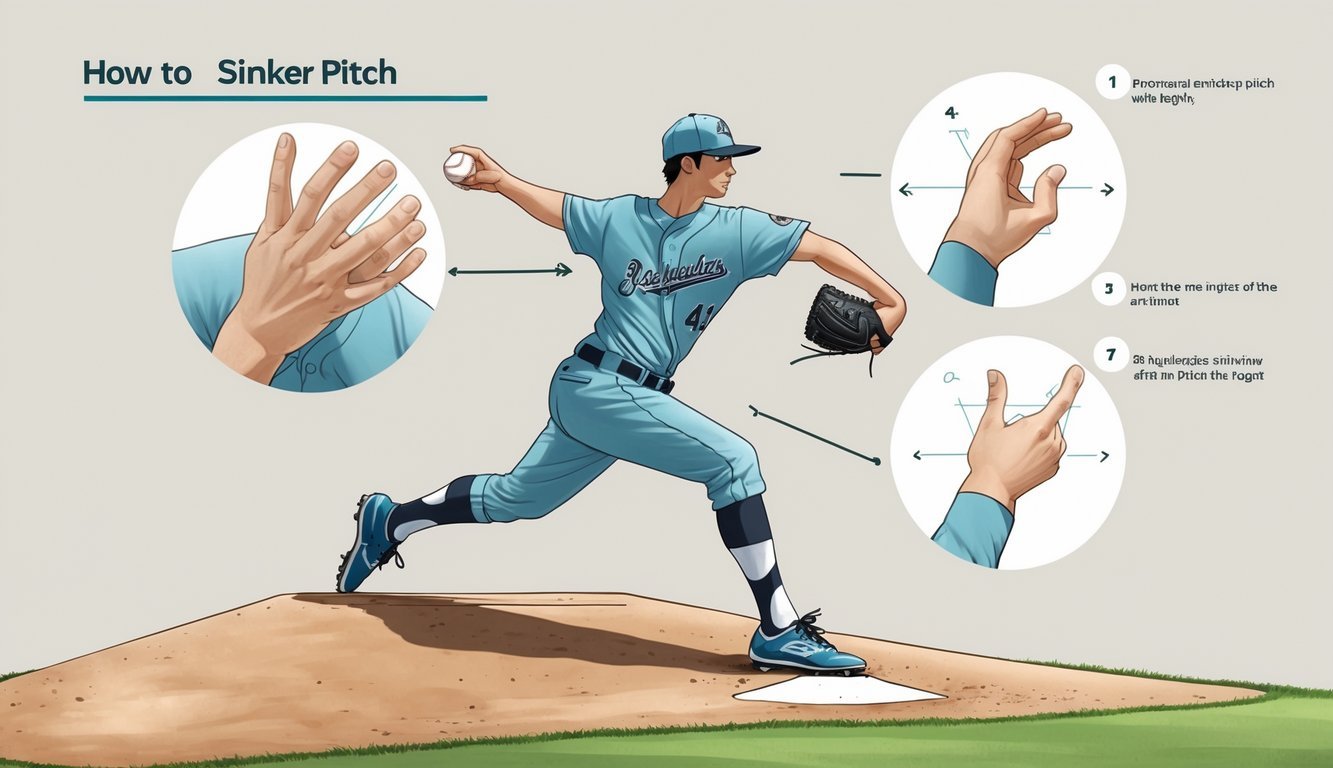PsychNewsDaily Publishers
100 Summit Drive
Burlington, MA, 01803
Telephone: (320) 349-2484
PsychNewsDaily Publishers
100 Summit Drive
Burlington, MA, 01803
Telephone: (320) 349-2484
The sinker is a fastball that drops sharply, inducing ground balls and double plays by using a low spin grip and specific wrist mechanics.

Throwing a sinker gives you a great way to make batters hit ground balls. You make the ball drop suddenly as it reaches the plate.
To throw a sinker, grip the ball along the seams and use the right wrist motion so it sinks down and moves inside. This pitch feels tricky at first, but with practice, you’ll add a strong weapon to your pitching arsenal.
You’ll notice your grip, arm slot, and finger pressure all change the ball’s movement. The main idea? Throw the ball low and inside, so the batter hits the top of the ball and grounds out.
If you want your sinker to work well, you really need to focus on the right mechanics.
Once you get these basics down, you’ll use the sinker to keep hitters off balance and get more outs.
This post will walk you through the steps to develop this pitch on your own.

The sinker is a special kind of fastball that moves differently than most pitches. It combines vertical and horizontal movement to confuse batters and create more ground balls.
This pitch helps you control where the ball lands in the strike zone. It can lead to double plays by forcing hitters to hit the ball on the ground.
A sinker is a fastball that drops as it reaches the plate. Unlike a regular four-seam fastball, which moves mostly straight and fast, the sinker breaks downward or “sinks” because of how you grip and spin the ball.
When you throw it right, the sinker moves down and a bit inside or outside, depending on your arm angle and release. This helps the ball avoid the sweet spot of the bat, making it harder for hitters to get solid contact.
The sinker stands out from other fastballs because of its spin and movement. A four-seam fastball uses backspin to stay straight and high in the zone.
The sinker has less spin, so it drops more as it nears the strike zone. You usually throw the sinker lower in the zone, which encourages ground balls.
The two-seamer is similar but usually has more sideways movement. The sinker mixes that horizontal movement with a vertical dive, which makes it unique.
| Pitch Type | Spin Type | Movement Direction | Common Use |
|---|---|---|---|
| Four-seam | Backspin | Straight, slight rise | Strikeouts, high strikes |
| Two-seam | Side spin | Horizontal break | Ground balls, inside pitches |
| Sinker | Low spin | Downward + horizontal | Ground balls, double plays |
Pitchers love throwing sinkers because they lead to more ground balls. Ground balls are easier to control and can create double plays, which helps your team get outs quickly.
The sinker keeps the ball low in the strike zone. Batters tend to swing under the ball or hit it weakly.
Since the sinker moves differently from a straight fastball, it keeps hitters off balance and guessing. Mixing in the sinker with other pitches makes it harder for batters to predict what’s coming.

To throw a good sinker, you need to master the grip, get your mechanics right, and practice control. Understanding different variations and using drills can help you improve.
Staying healthy and avoiding injury will keep you throwing strong for the long run.
Start by holding the ball with your index and middle fingers along the seams. The middle finger rests slightly off-center on one seam, while the index finger stays close by.
Your thumb goes directly underneath for support. Apply firm but not tight pressure with your fingers.
This grip creates the right friction for the ball to spin forward. The grip influences the ball’s sinking action and keeps the spin rate low.
Push the ball down with topspin to get that sharp drop. If you grip too hard, you’ll lose control and power.
Your throwing hand and arm angle matter a lot for the sinker’s movement. Use a lower arm slot, closer to sidearm than over-the-top.
This angle helps the ball dive. During delivery, keep your wrist firm but relaxed.
Snap it forward slightly to add topspin. Time your hand action so the ball rotates with forward spin for the sinking effect.
Keep your stance balanced. Drive with your waist and legs to generate power without losing control.
The motion should feel smooth and natural, or the spin might get messed up.
Good command means you can pitch the sinker where you want. Focus on throwing strikes low and inside to get grounders and strikeouts.
Practice a consistent release point and steady finger pressure. Even small changes can make the ball miss or float.
Watch where your ball lands and tweak your mechanics if you lose accuracy. Building control takes reps.
Try drills that help you feel the ball’s movement and improve spin consistency. A sinker that breaks late and stays low is tough for batters to hit hard.
You’ll mostly see two main sinkers: the traditional two-seam and the one-seam sinker. The two-seam uses your index and middle fingers on the seams for more sideways movement.
A one-seam sinker shifts the grip slightly to one seam, which can lead to more vertical drop. Both rely on low spin and good finger pressure.
Mixing sinkers with sliders or changeups keeps hitters off balance. Adding variety to your pitches makes your sinker even more effective.
Start with short toss drills that focus on grip and release. Feel the difference between topspin and backspin.
Use bullpen sessions to work on your arm slot and wrist snap. Record yourself on video if you can—it helps you spot inconsistencies.
Try drills that separate your stride from your arm action to improve timing. This keeps your control sharp and builds power.
Aim for enough reps to build muscle memory, but don’t overdo it. Throwing hundreds of sinkers with good form strengthens your command and power.
Good mechanics reduce stress on your arm and shoulder. Don’t hyperextend your elbow or wrist during release.
Warm up with stretching and light throws before pitching. This gets your muscles and tendons ready.
Listen to your body. If you feel pain or stiffness, take a break or talk to a trainer.
Overuse injuries happen a lot to sinker pitchers who throw too often. Keep shoulder strength and flexibility exercises in your routine.
A healthy arm lets you keep throwing your sinker with accuracy and power over time.

You need to focus on how you hold the ball, the timing, and how the pitch moves. Knowing when to throw a sinker and understanding the risks helps you improve.
Teaching others works best if you give clear, step-by-step guidance.
Start by holding the ball with a firm grip using your dominant hand.
Put your fingers along the seams, then use your wrist to add spin.
Release the ball downward for that sinking motion.
Place your index and middle fingers along the two seams where they’re closest, using the two-seam grip.
Your thumb sits underneath the ball for support.
Hold the ball tightly, but don’t squeeze too hard.
Use a sinker if you want to get ground balls from hitters.
It works well with runners on base since it lowers the chance of a home run.
Throw it low and in the strike zone.
Throwing a sinker a lot can put stress on your wrist and forearm muscles.
Bad throwing mechanics might cause arm pain or injury.
Always warm up and stretch before pitching.
A sinker moves downward and drops more sharply than a two-seam fastball.
Both use a similar grip, but the sinker’s spin makes the ball sink faster.
The sinker aims to induce weak contact.
Start by showing them the grip. Go slow and let them get comfortable holding the ball.
Let them throw some easy pitches. Ask them to focus on how their wrist moves.
Watch their release point and give feedback as they go. Encourage them to keep practicing—progress takes time.